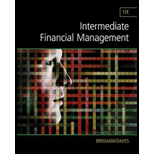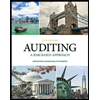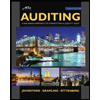
Define each of the following terms:
- a. Informal restructuring; reorganization in bankruptcy
- b. Assignment; liquidation in bankruptcy; fairness; feasibility
- c. Absolute priority doctrine; relative priority doctrine
- d. Bankruptcy Reform Act of 1978; Chapter 11; Chapter 7
- e. Priority of claims in liquidation
- f. Extension; composition; workout; cramdown; prepackaged bankruptcy; holdout
a)
To define: The term informal restructuring and reorganization in bankruptcy.
Explanation of Solution
When the firm negotiate with its creditors to change the debt structure at the time when it becomes financially weak then it is known as informal restructuring if the firm. There are two ways of debt restructuring i.e. by extension or by composition. In extension, creditors allow its debtor to pay off the date after certain period whereas in composition, the creditors decrease the amount of debtor’s fixed liabilities.
Under reorganization, capital structure is reorganized with court’s involvement. It is not done through informal means. The rules and regulation for restructuring as per courts required to be adhere by the company.
b)
To define: The term assignment, fairness, feasibility and liquidation in bankruptcy.
Explanation of Solution
Liquidation in any company may take place when the company becomes incapable of paying its debt. The assignment is a type of liquidation process which is informal in nature. This is more beneficial for a creditor as it pays more prices for its assets rather than the prices offered under formal liquidation procedure in bankruptcy.
The assignment is feasible for small companies rather than too complex organizations. The fairness as per basic doctrines states that the legal and contractual aspects should be considered while recognizing the claims.
c)
To define: The term absolute and relative priority doctrine.
Explanation of Solution
The absolute priority doctrine under the early bankruptcy laws says that the claimants should be classified as senior and junior and priority should be given to senior claimants while making debt payments. In any delay in their payments will result in shut down of the company and liquidation.
On the other hand, the relative priority doctrine suggests paying all the claimants equally with the available amount for debt-payment.
d)
To define: The term bankruptcy reform act, 1978.
Explanation of Solution
The Bankruptcy reform act 1978 of chapter 7 contains liquidation procedures. It protects the creditors from any fraudulent act of debtor, ensure equal distribution among the creditors, and allow debtors to restart a new business after discharging its obligations. The chapter 11 of bankruptcy reform act, 1978 deals with business reorganization chapter. Under this chapter a case is happening when a company’s management or creditors sue an appeal with bankruptcy court.
e)
To define: The priorities of claims in liquidation.
Explanation of Solution
There are two types of priority doctrine in liquidation which are as follows:
The absolute priority doctrine under the early bankruptcy laws says that the claimants should be classified as senior and junior and priority should be given to senior claimants while making debt payments. In any delay in their payments will result in shut down of the company and liquidation.
On the other hand, the relative priority doctrine suggests paying all the claimants equally with the available amount for debt-payment.
f)
To define: The terms such as extension, composition, cram down, pre-packaged bankruptcy, workout and holdout.
Explanation of Solution
There are two ways of debt restructuring i.e. by extension or by composition. In extension, creditors allow its debtor to pay off the date after certain period whereas in composition, the creditors decrease the amount of debtor’s fixed liabilities.
Cram down is the procedure whereby the court approves the reorganization plan even after the disagreement of both the parties i.e. creditors and stockholders.
The pre-packaged bankruptcy is a hybrid of informal workout and formal reorganization.
The workouts are the voluntary reorganization plan that is initiated by creditors to help an organization to recoup its financial soundness.
The holdout is a problem that a company faces while getting all the members to agree upon a similar condition during informal reorganization.
Want to see more full solutions like this?
Chapter 25 Solutions
Intermediate Financial Management (MindTap Course List)
- Dont use chatgpt and give answer What does “liquidity” refer to in finance? a) The profitability of a companyb) The ease of converting assets into cashc) The stability of incomed) The level of debtarrow_forwardThe opportunity cost of holding cash is inversely related to the level of market interest rates. Question 9 options: True Falsearrow_forwardYour firm deals strictly with four customers. The average amount that each customer pays per month along with the collection delay associated with each payment is shown below. Given this information, what is the amount of the average daily receipts? Assume that every month has 30 days. Customer Item Amount Delay A $8,500 5 days B $12,000 2 days C $16,000 3 days D $3,600 2 days Question 8 options: $8,448 $1,337 $3,342 $1,408 $10,025arrow_forward
- Which of the following is true regarding cash management? Question 7 options: The basic objective in cash management is to keep the investment in cash as low as possible while still operating efficiently and effectively. Effective cash management results in minimization of the total interest earnings involved with holding cash. A cost of holding cash is the liquidity it gives the firm. A firm should decrease its cash holdings as long as the NPV of doing so is negative. A cost of holding cash is the interest income earned on the outstanding cash balance.arrow_forwardLow default risk is a characteristic of money market securities. Question 6 options: True Falsearrow_forwardJeep Corp. held large sums of cash during the mid-1990s primarily because it would need a large amount of cash in the event of a recession. This is a[n] _____ for holding cash. Question 5 options: Adjustment motive. Compensating balances motive. Speculative motive. Transactions motive. Precautionary motive.arrow_forward
- With respect to the workings of a lockbox system, the cheque clearing process begins before the company even knows the payments have been received. Question 4 options: True Falsearrow_forwardYou are considering implementing a lockbox system for your firm. The system is expected to reduce the collection time by 1.5 days. On an average day, your firm receives 250 checks with an average value of $400 each. The daily interest rate on Treasury bills is .02%. What is the anticipated amount of the daily savings if this system is implemented? Question 3 options: $30 $25 $15 $20 $10arrow_forwardDisbursement float is virtually eliminated when payments are made electronically. Question 2 options: True Falsearrow_forward
- According to your cheque book, you have a $3,000 balance in your account. You write cheques totaling $4,500 and make a deposit of $3,500. Determine your net float. Question 1 options: $8,000 -$1,000 $0 $1,000 $4,000arrow_forwardWhat is a blue-chip stock? a) A stock with high volatilityb) A stock of a well-established, financially sound companyc) A newly launched IPO stockd) A stock with high dividends but low growtharrow_forwardNo chatgpt! What does “liquidity” refer to in finance? a) The profitability of a companyb) The ease of converting assets into cashc) The stability of incomed) The level of debtarrow_forward
 Intermediate Financial Management (MindTap Course...FinanceISBN:9781337395083Author:Eugene F. Brigham, Phillip R. DavesPublisher:Cengage Learning
Intermediate Financial Management (MindTap Course...FinanceISBN:9781337395083Author:Eugene F. Brigham, Phillip R. DavesPublisher:Cengage Learning EBK CONTEMPORARY FINANCIAL MANAGEMENTFinanceISBN:9781337514835Author:MOYERPublisher:CENGAGE LEARNING - CONSIGNMENT
EBK CONTEMPORARY FINANCIAL MANAGEMENTFinanceISBN:9781337514835Author:MOYERPublisher:CENGAGE LEARNING - CONSIGNMENT Auditing: A Risk Based-Approach (MindTap Course L...AccountingISBN:9781337619455Author:Karla M Johnstone, Audrey A. Gramling, Larry E. RittenbergPublisher:Cengage Learning
Auditing: A Risk Based-Approach (MindTap Course L...AccountingISBN:9781337619455Author:Karla M Johnstone, Audrey A. Gramling, Larry E. RittenbergPublisher:Cengage Learning Auditing: A Risk Based-Approach to Conducting a Q...AccountingISBN:9781305080577Author:Karla M Johnstone, Audrey A. Gramling, Larry E. RittenbergPublisher:South-Western College Pub
Auditing: A Risk Based-Approach to Conducting a Q...AccountingISBN:9781305080577Author:Karla M Johnstone, Audrey A. Gramling, Larry E. RittenbergPublisher:South-Western College Pub




